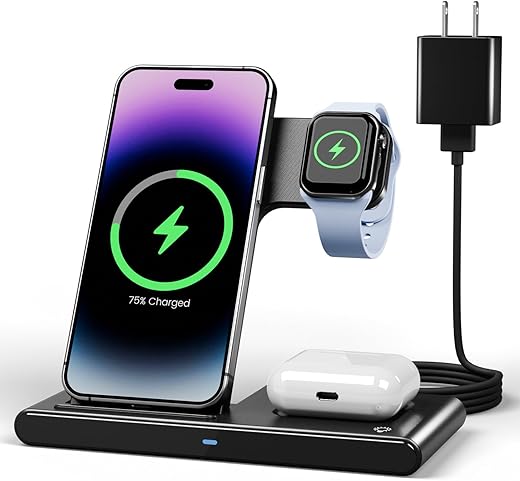

Understanding Wireless Charging: A Deep Dive into Communication Protocols
Wireless charging has transformed the way we power our devices, offering a seamless alternative to traditional charging methods. But how does it work? What are the underlying communication protocols that make this technology possible? In this article, we’ll explore these questions and demystify the complexity of wireless charging, ensuring you have a thorough understanding of this innovative technology.
What is Wireless Charging?
At its core, wireless charging uses electromagnetic fields to transfer energy between two objects. Imagine a dance between a charger and a device; they need to be close enough for the rhythm to sync. This technology, often referred to as inductive charging, relies on the principle of electromagnetic induction. When you place your smartphone on a wireless charger, it creates an electromagnetic field that transfers energy to the phone’s receiver coil, which then converts that energy into electrical power.
The Science Behind the Magic: Electromagnetic Induction
The process of wireless charging can be likened to a game of catch. The wireless charger throws out energy in the form of an electromagnetic field, and the device catches that energy through its receiving coil. This method of energy transfer, however, isn’t without its challenges. The distance between the charger and the device must be minimal, typically within a few millimeters, to ensure efficient energy transfer.
But how do the charger and the device communicate to ensure that energy is transferred effectively? This is where communication protocols come into play.
Communication Protocols: The Unsung Heroes
Think of communication protocols as the languages spoken between the charger and the device. Just as you need a common language to understand someone, wireless chargers and devices require a standardized protocol to ensure they can “talk” to each other.
The most widely adopted protocols include Qi, AirFuel, and PMA. Each has its unique features and capabilities:
– **Qi**: Developed by the Wireless Power Consortium (WPC), Qi is the most popular standard for wireless charging. It supports a wide range of devices and has been integrated into smartphones, smartwatches, and even electric vehicles. Qi uses resonant inductive coupling, allowing for efficient energy transfer.
– **AirFuel**: A newer player in the field, AirFuel combines inductive and resonant technologies. It is designed to support faster charging speeds and longer distances. Think of it as the new kid on the block who has some cool tricks up their sleeve.
– **PMA**: The Power Matters Alliance (PMA) focuses primarily on public charging stations, like those found in cafes or airports. While it has its niche, it hasn’t gained the same level of traction as Qi.
The Evolution of Wireless Charging
The journey of wireless charging has been nothing short of fascinating. Originally, this technology was primarily used in specialized devices. However, as consumer demand for convenience grew, manufacturers began integrating wireless charging into everyday gadgets.
Today, you can find wireless charging capabilities in a variety of devices, from smartphones to wireless earbuds. But what does the future hold? As technology advances, we may see faster charging speeds, increased efficiency, and even longer distances between chargers and devices. Imagine charging your phone from across the room—how convenient would that be?
Challenges and Limitations
Despite its numerous benefits, wireless charging is not without its challenges. Efficiency is a significant concern; traditional wired charging can often transfer energy more effectively than its wireless counterpart. Moreover, heat generation during the charging process can lead to potential device damage over time.
Additionally, the need for precise alignment between the charger and the device can be a hassle. Have you ever experienced that annoying moment when your phone won’t charge because it’s slightly off-center? It’s a small frustration that can be easily avoided with a bit more technological advancement.
Conclusion
Wireless charging represents a significant leap forward in how we power our devices. By understanding the underlying communication protocols and the science behind electromagnetic induction, you can appreciate the technology’s intricacies. As we continue to innovate and push the boundaries of what’s possible, the future of wireless charging looks bright, promising a more convenient and efficient way to keep our devices powered.
FAQs
1. Is wireless charging slower than wired charging?
While wireless charging can be slower than wired charging, advancements in technology are rapidly closing this gap. Many modern wireless chargers now support fast charging capabilities.
2. Can I use any wireless charger for my device?
Not all wireless chargers are compatible with every device. It’s essential to check if your device supports the specific wireless charging protocol, such as Qi or AirFuel.
3. Does wireless charging generate more heat than wired charging?
Yes, wireless charging tends to generate more heat due to energy loss during the transfer process. However, most modern devices and chargers have built-in mechanisms to manage heat effectively.
